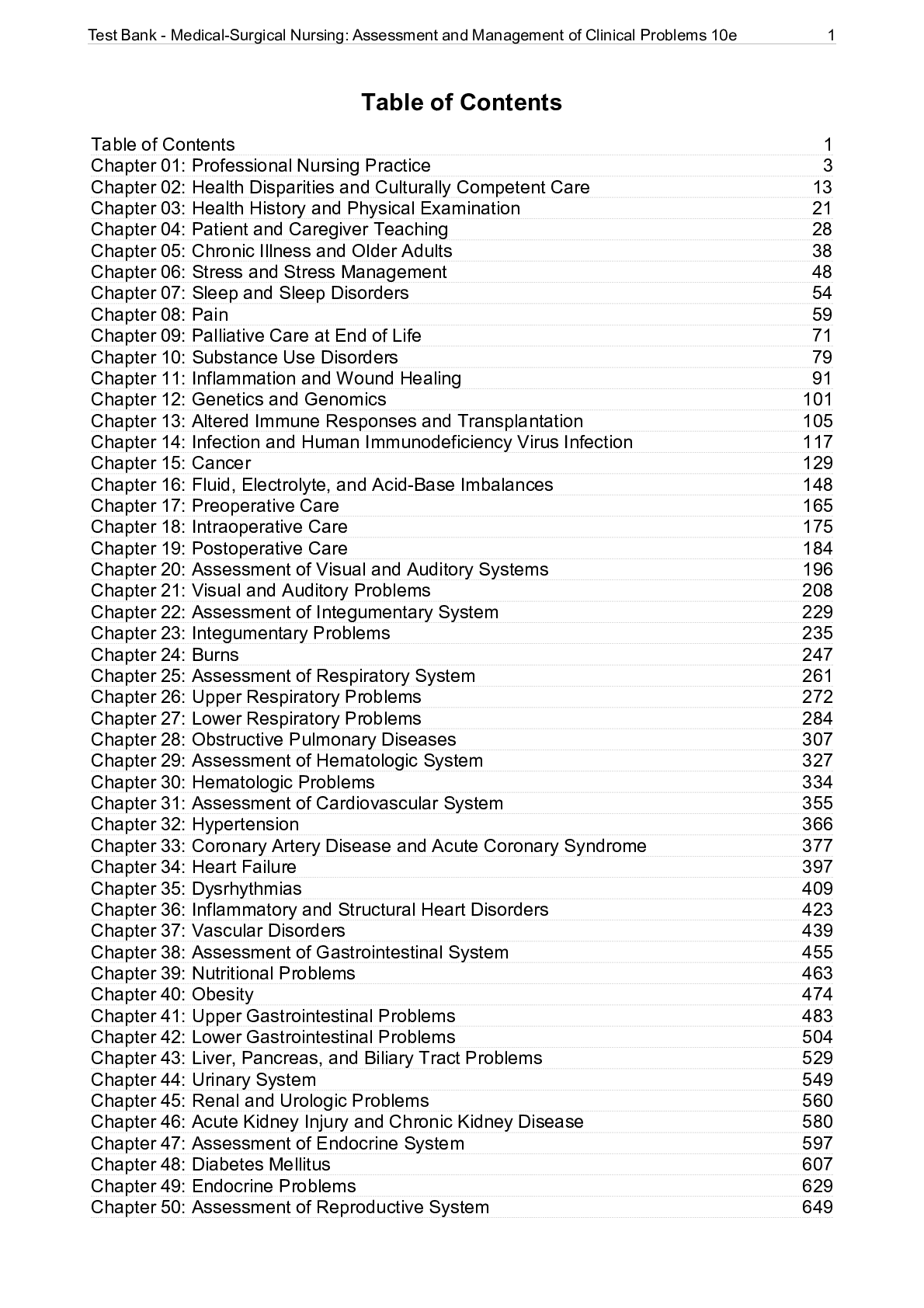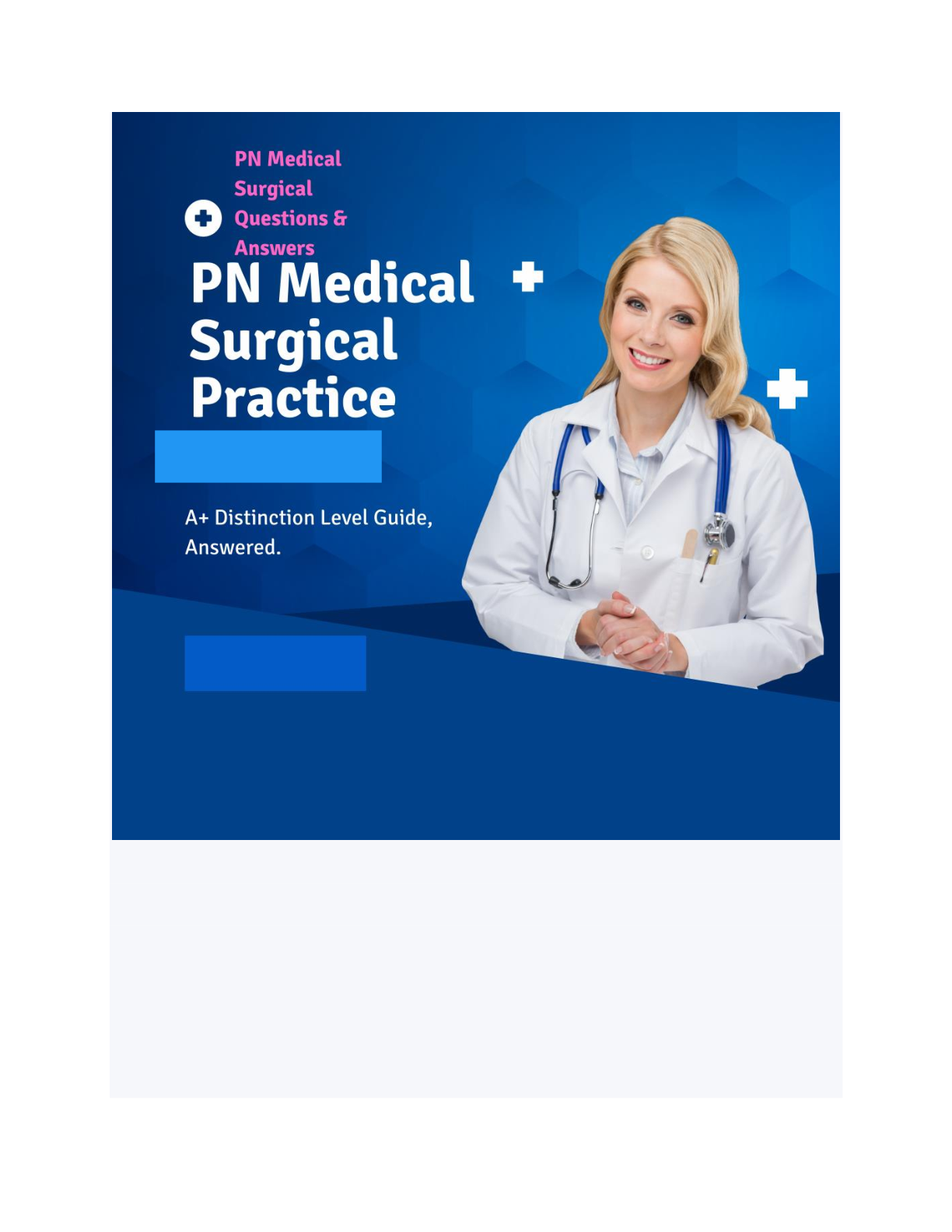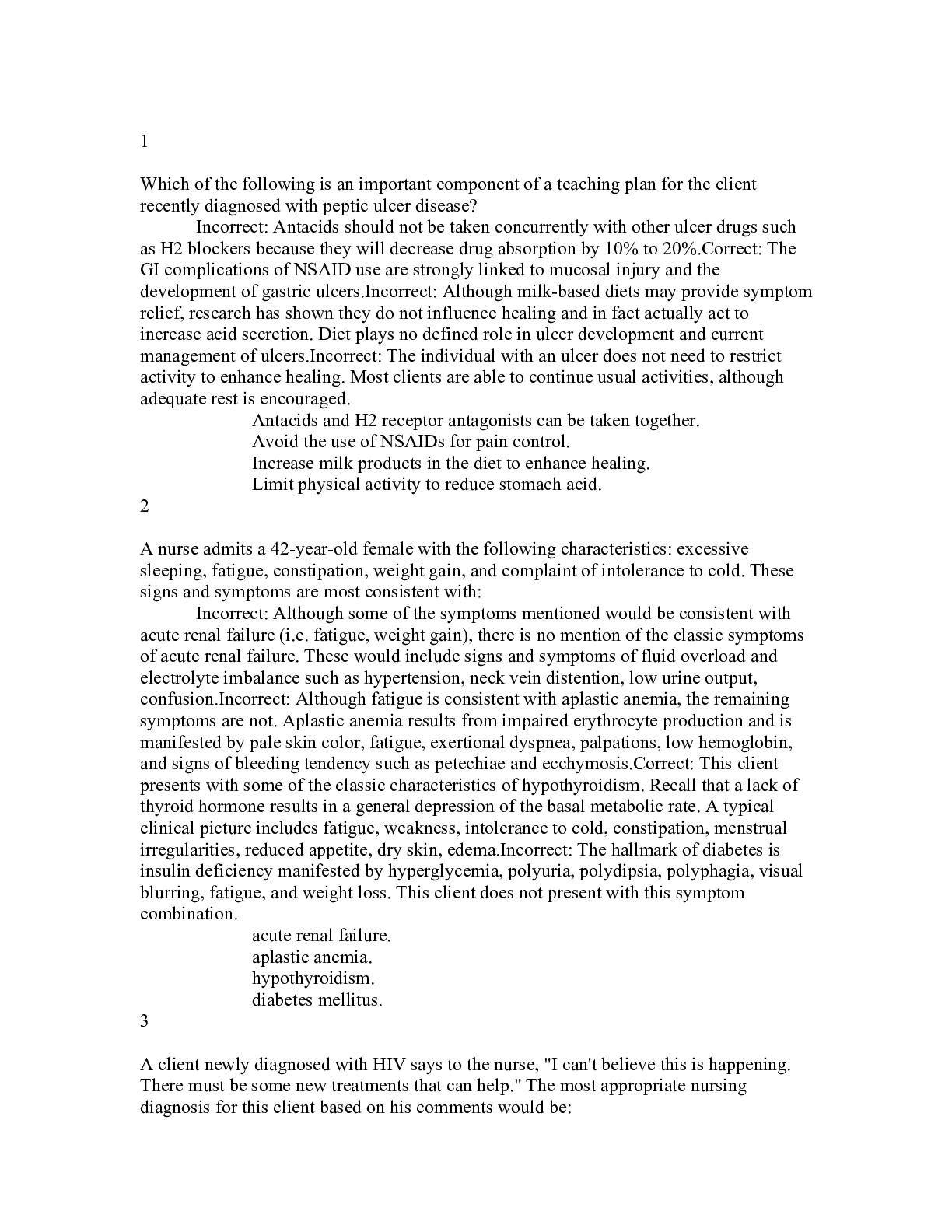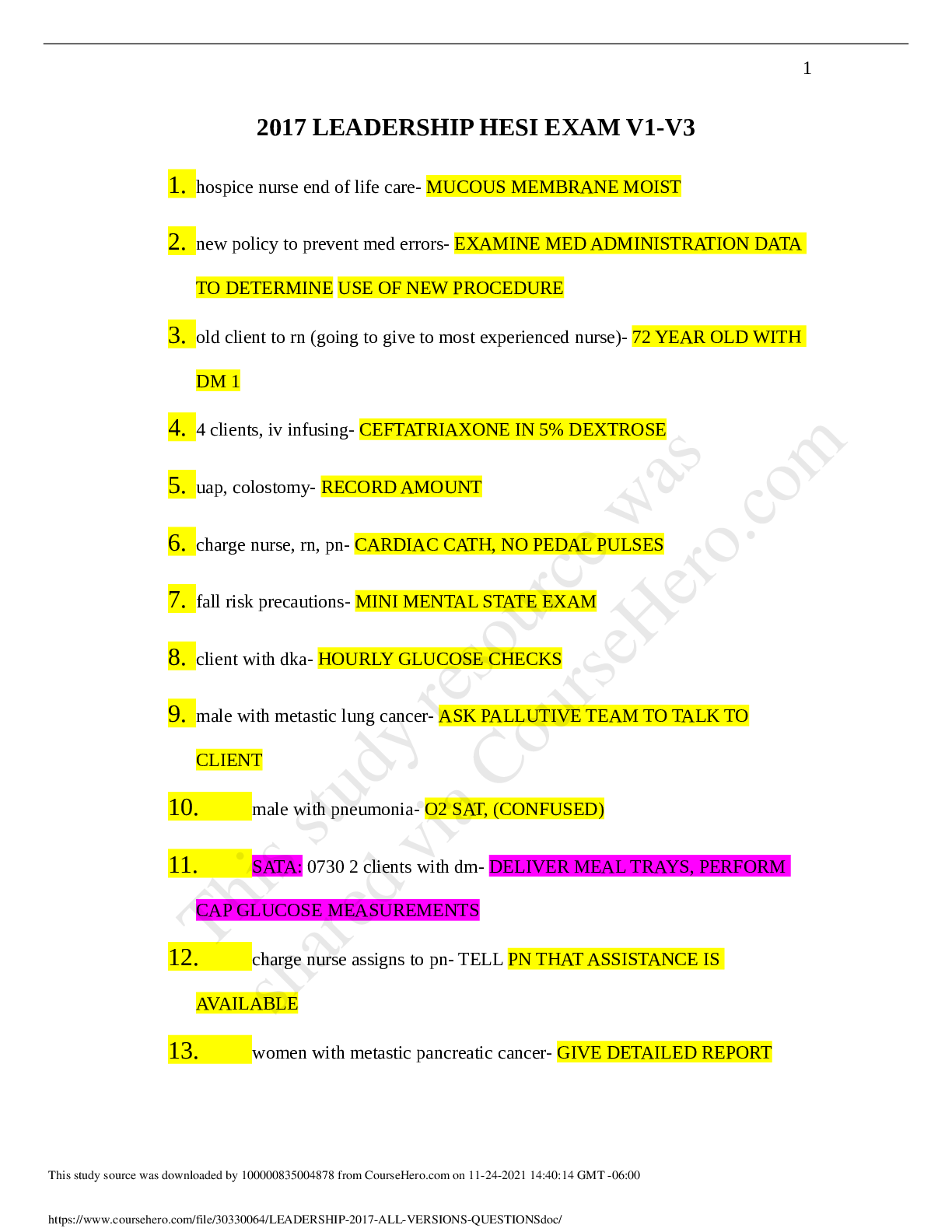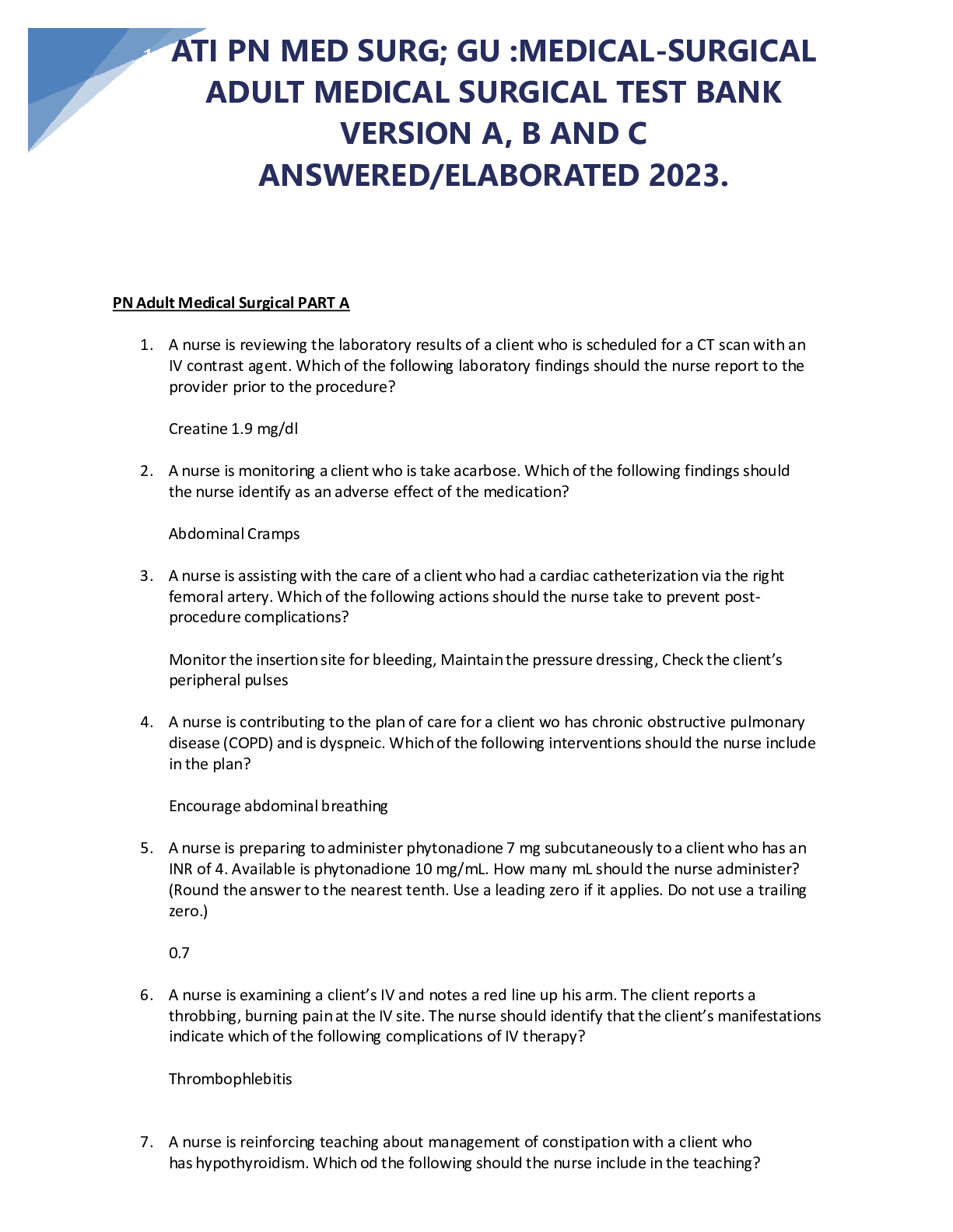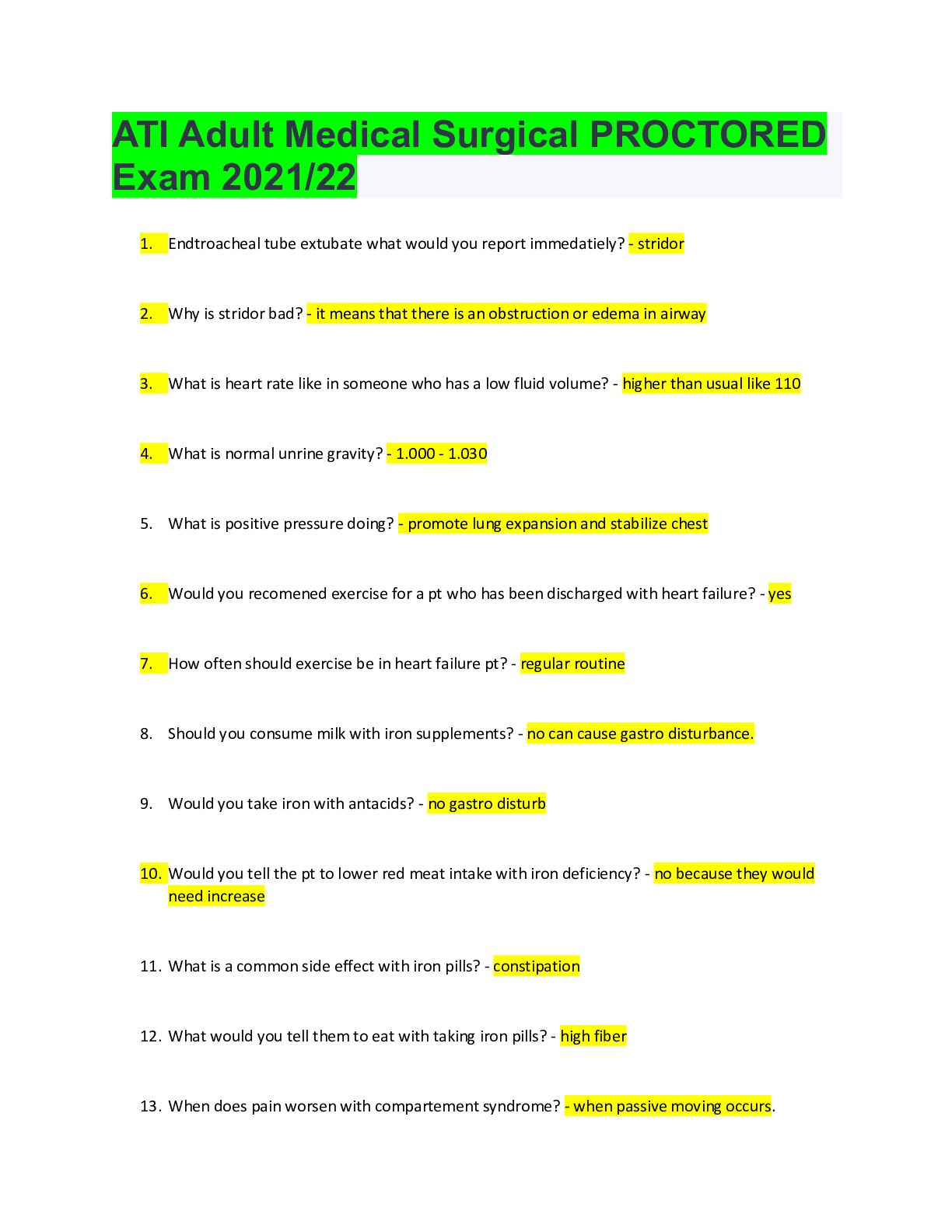*NURSING > MED-SURG EXAM > Lewis: Medical-Surgical Nursing, 10th Edition CHAPTER 57:STROKE (All)
Lewis: Medical-Surgical Nursing, 10th Edition CHAPTER 57:STROKE
Document Content and Description Below
A patient with a left-brain stroke suddenly bursts into tears when family members visit. The nurse should a. use a calm voice to ask the patient to stop the crying behavior. b. explain to the family ... that depression is normal following a stroke. c. have the family members leave the patient alone for a few minutes. d. teach the family that emotional outbursts are common after strokes. ANS: D Patients who have left-sided brain stroke are prone to emotional outbursts that are not necessarily related to the emotional state of the patient. Depression after a stroke is common, but the suddenness of the patient’s outburst suggests that depression is not the major cause of the behavior. The family should stay with the patient. The crying is not within the patient’s control, and asking the patient to stop will lead to embarrassment. DIF: Cognitive Level: Apply (application) REF: 1364 TOP: Nursing Process: Implementation MSC: NCLEX: Psychosocial Integrity 20. Which stroke risk factor for a 48-yr-old male patient in the clinic is most important for the nurse to address? a. The patient is 25 lb above the ideal weight. b. The patient drinks a glass of red wine with dinner daily. c. The patient’s usual blood pressure (BP) is 170/94 mm Hg. d. The patient works at a desk and relaxes by watching television. ANS: C Hypertension is the single most important modifiable risk factor. People who drink more than 1 (for women) or 2 (for men) alcoholic beverages a day may increase their risk for hypertension. Physical inactivity and obesity contribute to stroke risk but not as much as hypertension. DIF: Cognitive Level: Analyze (analysis) REF: 1347 OBJ: Special Questions: Prioritization TOP: Nursing Process: Assessment MSC: NCLEX: Health Promotion and Maintenance 21. A patient in the emergency department with sudden-onset right-sided weakness is diagnosed with an intracerebral hemorrhage. Which information about the patient is most important to communicate to the health care provider? a. The patient’s speech is difficult to understand. b. The patient’s blood pressure (BP) is 144/90 mm Hg. c. The patient takes a diuretic because of a history of hypertension. d. The patient has atrial fibrillation and takes warfarin (Coumadin). ANS: D The use of warfarin probably contributed to the intracerebral bleeding and remains a risk factor for further bleeding. Administration of vitamin K is needed to reverse the effects of the warfarin, especially if the patient is to have surgery to correct the bleeding. The history of hypertension is a risk factor for the patient but has no immediate effect on the patient’s care. The BP of 144/90 indicates the need for ongoing monitoring but not for any immediate change in therapy. Slurred speech is consistent with a left-sided stroke, and no change in therapy is indicated. DIF: Cognitive Level: Analyze (analysis) REF: 1349 OBJ: Special Questions: Prioritization TOP: Nursing Process: Assessment MSC: NCLEX: Physiological Integrity 22. A patient with left-sided weakness that started 60 minutes earlier is admitted to the emergency department and diagnostic tests are ordered. Which test should be done first? a. Complete blood count (CBC) b. Chest radiograph (chest x-ray) Neuro II. 7 c. Computed tomography (CT) scan d. 12-Lead electrocardiogram (ECG) ANS: C Rapid screening with a noncontrast CT scan is needed before administration of tissue plasminogen activator (tPA), which must be given within 4.5 hours of the onset of clinical manifestations of the stroke. The sooner the tPA is given, the less brain injury. The [Show More]
Last updated: 3 years ago
Preview 1 out of 25 pages

Buy this document to get the full access instantly
Instant Download Access after purchase
Buy NowInstant download
We Accept:

Reviews( 0 )
$14.00
Can't find what you want? Try our AI powered Search
Document information
Connected school, study & course
About the document
Uploaded On
Aug 30, 2021
Number of pages
25
Written in
All
Additional information
This document has been written for:
Uploaded
Aug 30, 2021
Downloads
0
Views
136



